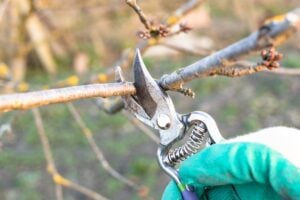Table of Contents
Pruning for Beauty or Safety: Striking the Perfect Balance
Tree pruning is more than just cutting branches—it’s a delicate balance between enhancing beauty and ensuring safety. Whether you’re maintaining a residential landscape in Montclair, NJ, or addressing hazardous tree limbs near public walkways, understanding the difference between pruning for aesthetics and pruning for safety is crucial. Done correctly, the right tree pruning techniques not only improve curb appeal but also protect your property, family, and community.
Why Tree Pruning Matters
Trees are living assets that contribute shade, beauty, and environmental benefits. However, when overgrown branches or structurally weak limbs are ignored, they can become dangerous. A proper pruning plan focuses on
- Aesthetic pruning – shaping trees to complement your landscape.
- Safety pruning – removing hazards that could cause injury or damage.
- Structural pruning – ensuring long-term tree health and stability.
Finding the right tree trimming balance between these goals requires professional knowledge and careful execution.
Pruning for Aesthetics
Aesthetic pruning is all about improving the visual appeal of your trees while maintaining their natural shape. Arborists use decorative tree trimming techniques like crown thinning and shaping to highlight a tree’s best features.
Benefits of Aesthetic Pruning:
- Creates symmetry and enhances curb appeal.
- Improves sunlight penetration for gardens and lawns.
- Maintains the natural beauty of your property.
- Prevents tree pruning mistakes such as uneven cuts or topping.
Case Example: A homeowner in Montclair had ornamental Japanese maples that grew too dense. Through careful aesthetic pruning, the arborists preserved the tree’s unique shape while opening its crown for healthier growth.
Pruning for Safety
While aesthetics enhance landscapes, safety pruning protects people and property. Unchecked trees may hide risks that only a trained arborist can spot through a tree risk assessment.
Signs That Safety Pruning Is Needed:
- Hazardous tree limbs hanging over driveways or rooftops.
- Branches interfering with power lines or structures.
- Weak or damaged branches from storm damage.
- Diseased or deadwood that threatens tree health and safety.
Safety Pruning Techniques:
- Tree limb removal of dead or dangerous branches.
- Structural pruning for young trees to encourage strong frameworks.
- Preventative tree care to minimize risks before storms hit.
- Following tree trimming regulations for urban safety compliance.
Case Example: After a harsh winter storm, an oak tree in a Montclair neighborhood developed cracked limbs. Through timely safety pruning and storm damage prevention measures, American Tree Experts avoided property damage and extended the tree’s life.
Striking the Right Balance: Aesthetic vs. Safety
The best approach is not to choose one over the other but to integrate both goals. Professional arborists understand how to combine tree maintenance best practices with the artistry of pruning.
How Arborists Find the Balance:
- Conducting a tree risk assessment before pruning.
- Applying seasonal pruning tips for optimal growth and safety.
- Using structural pruning on young trees for long-term benefits.
- Blending tree aesthetics vs. functionality so trees remain both beautiful and secure.
By blending beauty with safety, your trees remain an asset rather than a liability.
Common Tree Pruning Mistakes to Avoid

- Over-pruning: Removing too much foliage can weaken tree health.
- Improper timing: Ignoring proper pruning timing may lead to disease vulnerability.
- DIY cutting: Lacking professional tools or techniques can cause permanent damage.\
- Neglecting safety needs: Focusing only on looks may leave dangerous limbs intact.
Working with certified arborists ensures your trees receive proper residential tree care without risking their health or your safety.
Seasonal and Urban Considerations
In Montclair and other urban environments, trees face unique challenges. From urban tree safety concerns to tree trimming regulations, the environment often dictates pruning strategies.
- Spring & Summer: Ideal for shaping and decorative tree trimming.
- Late Winter: Best for structural and safety pruning, reducing stress on trees.
- Storm Seasons: Critical time for preventative tree care and storm damage prevention.
Final Thoughts
Tree pruning is both a science and an art. Pruning for aesthetics enhances beauty, while pruning for safety ensures peace of mind. The right balance—achieved through tree pruning techniques and expert knowledge—creates healthy, safe, and stunning landscapes.
For homeowners in Montclair, NJ, trusting experts is the safest way to ensure long-term results.
Contact American Tree Experts today at (973) 744-6091 or email am*******************@***il.com to schedule a consultation and keep your trees both beautiful and safe.
